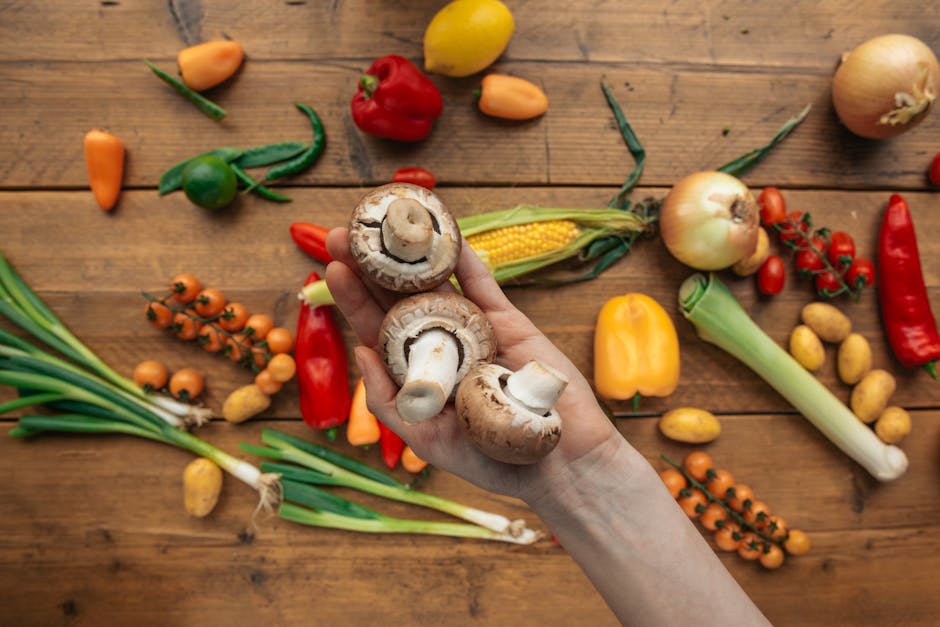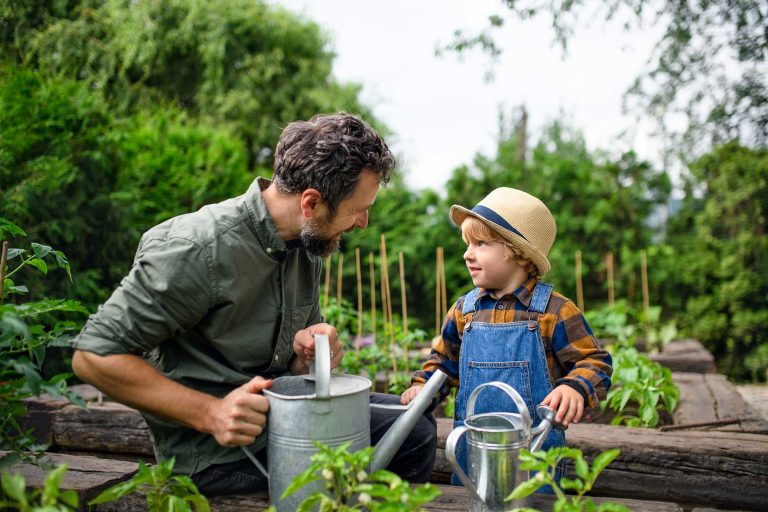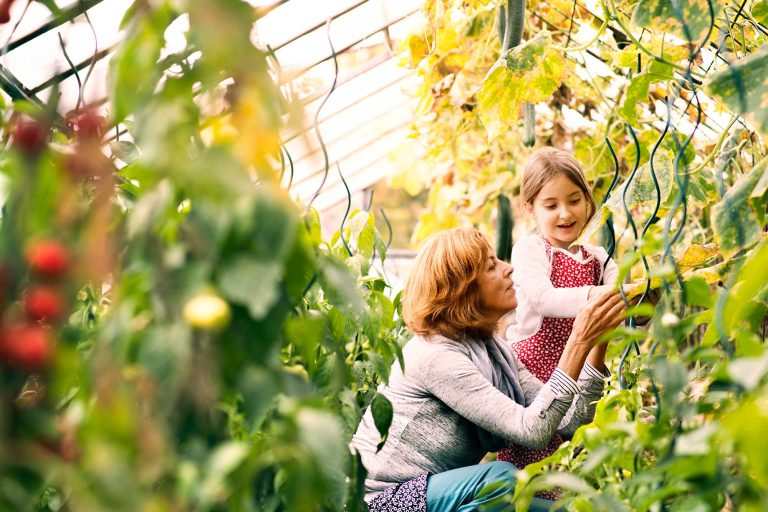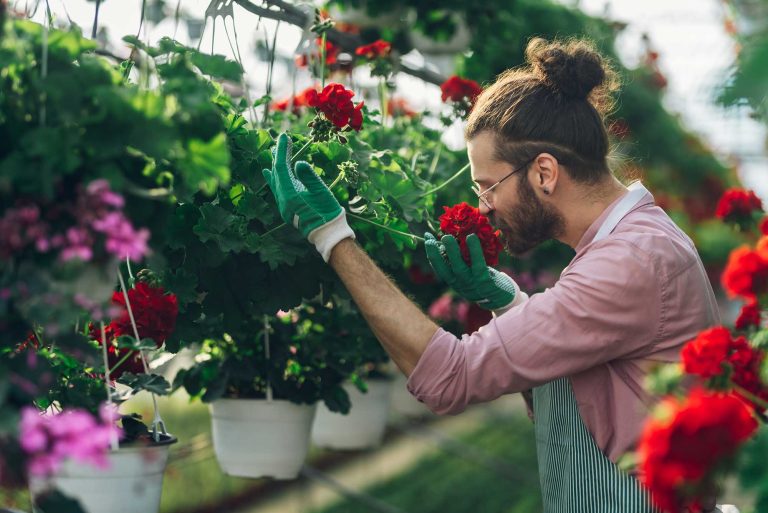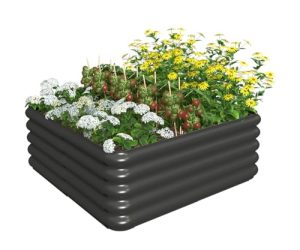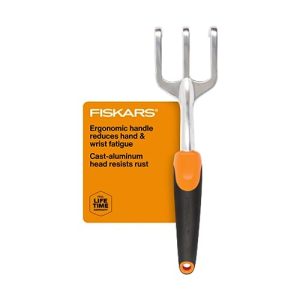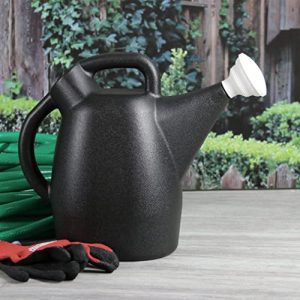Imagine stepping into your garden and harvesting fresh, home-grown mushrooms alongside your tomatoes and lettuce. Sounds intriguing, right?
You might be wondering if it’s possible to cultivate mushrooms right in your backyard. The good news is, yes, you can plant mushrooms in your garden, and it’s easier than you think! By doing so, you unlock a world of flavors and textures that store-bought mushrooms simply can’t match.
You’ll have the satisfaction of knowing exactly where your food comes from, and your meals will boast an unbeatable freshness. Plus, growing mushrooms could be the secret ingredient to transforming your garden into a thriving ecosystem. But before you grab your gardening gloves, there are a few things you need to know. Dive into this article to discover the fascinating process of mushroom cultivation, learn about the ideal conditions, and get tips on how to overcome common challenges. You’ll find that with a little knowledge and some practical steps, you can start your own mushroom garden, adding a unique and sustainable dimension to your outdoor space. Keep reading to uncover the secrets of successful mushroom gardening!
Choosing The Right Mushroom Species
Select mushroom species that thrive in your climate for successful garden growth. Consider soil type and shade availability. Oyster and shiitake mushrooms often adapt well to home gardens.
Choosing the right mushroom species for your garden can be an exciting journey into a world of flavors, health benefits, and ecological harmony. Whether you’re a culinary enthusiast, a health-conscious individual, or someone who loves experimenting with unique garden projects, mushrooms offer something special. But how do you decide which species to plant?Edible Varieties
Edible mushrooms can transform a simple meal into a gourmet feast. Consider starting with easy-to-grow varieties like Oyster mushrooms or Shiitake. These species not only thrive in various garden settings but also add a rich, savory flavor to your dishes. Are you a fan of pasta or stir-fries? Button mushrooms are a great choice, as they are versatile and commonly used in many recipes. They can be grown in containers or directly in your garden soil, making them a convenient option for beginners.Medicinal Options
Medicinal mushrooms bring more than just flavor to the table; they offer potential health benefits. Reishi and Lion’s Mane are known for their health-boosting properties. Imagine boosting your immune system or improving cognitive function with mushrooms right from your garden. Growing medicinal mushrooms isn’t just about health; it’s also a sustainable way to support your well-being. It’s like having a natural pharmacy at your fingertips. Are you ready to harness the power of nature in your backyard?Wild Vs Cultivated
The choice between wild and cultivated mushrooms depends on your experience and comfort level. Wild mushrooms, like Morels and Chanterelles, offer unique flavors but require a keen eye for identification. Mistakes can be risky, so only forage if you’re confident in your skills. On the other hand, cultivated mushrooms provide a safer and more controlled growing experience. Kits and spawn for species like Portobello or Enoki are readily available, making the process straightforward. Cultivated mushrooms allow you to enjoy a steady supply without the guesswork. Choosing the right mushroom species is about understanding your goals and capabilities. Which path will you take? Will you opt for the familiar comfort of cultivated varieties or the adventurous allure of wild mushrooms? Your garden is your canvas, and the choice is yours.
Credit: www.reddit.com
Preparing Your Garden For Mushrooms
Planting mushrooms in your garden can be rewarding. Choose a shady spot with rich, moist soil. Ensure proper drainage to prevent waterlogging, which can harm mushroom growth.
Preparing your garden to grow mushrooms can be an exciting venture. While mushrooms are known for their mysterious growth patterns, cultivating them in your own backyard can be both rewarding and manageable. Before you begin, it’s crucial to ensure your garden is set up for success. Here’s how you can create the perfect environment for your mushroom journey.Ideal Soil Conditions
Mushrooms thrive in specific soil conditions that differ from most garden plants. Rich, organic matter is key, so consider mixing in decomposed leaves, straw, or wood chips. Avoid overly compacted soil, as mushrooms prefer a loamy, airy texture that allows for water retention without becoming waterlogged. Testing your soil’s pH is another critical step. Mushrooms generally prefer a neutral to slightly acidic pH, around 6.0 to 7.0. Simple soil testing kits are available at garden centers and can guide you in adjusting pH levels with lime or sulfur if necessary.Climate Considerations
Climate plays a significant role in the successful cultivation of mushrooms. Most mushrooms prefer cooler, moist environments. If you live in a hot and dry region, you might need to create a microclimate by adding shade cloths or misting systems. In contrast, if your area experiences ample rain and moderate temperatures, your natural conditions might already be ideal. Keep an eye on humidity levels; mushrooms require a high humidity environment to flourish, often between 70-90%.Space And Location
The location you choose for planting mushrooms can significantly affect their growth. Look for a spot in your garden that receives dappled sunlight or shade throughout the day. Direct sunlight can dry out the substrate, hindering mushroom development. Consider the space needed for your chosen mushroom variety. While some mushrooms, like shiitakes, can be grown on logs that can be stacked vertically, others like oyster mushrooms might require a horizontal bed. Planning your garden layout to accommodate these needs will enhance productivity. As you prepare your garden, think about the unique requirements of mushrooms compared to other plants. Are you ready to transform your garden into a mushroom haven? With the right preparation, you’ll be harvesting your own delicious mushrooms in no time.Planting Techniques
Planting mushrooms in your garden is possible with the right conditions. Choose a shady, moist area and use mushroom spawn or plugs. Ensure the soil is rich in organic matter to support growth.
Planting mushrooms in your garden can be an intriguing and rewarding endeavor. With the right techniques, you can enjoy a bountiful harvest of these fascinating fungi. Whether you’re a seasoned gardener or a curious beginner, understanding the basics of mushroom planting techniques is essential to success. Let’s dive into the specifics of each method to ensure your mushroom garden thrives.Using Spores Vs Kits
Choosing between spores and kits is your first decision. Spores are like seeds for mushrooms and offer a more hands-on approach, allowing you to grow mushrooms from scratch. They require patience and precision but can be rewarding if you’re up for the challenge. On the other hand, mushroom kits are user-friendly and perfect for beginners. They come with everything you need to start growing right away. Kits remove much of the guesswork and are a great way to gain confidence before moving on to more complex techniques.Layering And Substrates
Layering is crucial for mushroom growth. Think of it like assembling a lasagna: each layer plays a role in nourishing your fungi. Start with a nutritious substrate as the base, such as straw, wood chips, or coffee grounds. Consider the type of mushroom when choosing your substrate. Oyster mushrooms, for example, thrive on straw, while shiitakes prefer hardwood. Layer your substrate evenly and introduce your spores or kit contents to create the ideal environment for growth.Watering And Humidity Control
Mushrooms require a moist environment, but it’s a delicate balance. Overwatering can drown your mushrooms, while too little moisture stunts their growth. Aim for a consistently damp substrate—think of a well-wrung sponge. Consider using a spray bottle for gentle and even moisture distribution. Additionally, maintain humidity by misting the area regularly or using a humidity tent. Ask yourself: How can you create a microclimate that mimics a forest floor? That’s your key to a thriving mushroom garden. By experimenting with these techniques, you’ll gain insights into what works best in your space. With a little dedication and curiosity, you could soon find yourself enjoying fresh, home-grown mushrooms, adding unique flavors to your meals.
Credit: www.yahoo.com
Maintenance And Care
Regular watering and shading are essential for mushroom growth in gardens. Keep the soil moist and cool to ensure healthy mushrooms. Mulching helps retain moisture and maintain the ideal environment.
Ensuring the successful cultivation of mushrooms in your garden involves a bit of dedication in maintenance and care. Unlike typical garden plants, mushrooms have unique needs that require attention and understanding. By focusing on monitoring growth, managing pests and diseases, and making seasonal adjustments, you can enjoy a bountiful mushroom harvest.Monitoring Growth
Regularly check your mushroom bed to ensure optimal growth conditions. Mushrooms thrive in environments with consistent moisture, so make sure the soil remains damp but not waterlogged. A simple touch test can help determine if you need to add more water. Look for any changes in color or texture, as these can indicate growth issues. If you notice mushrooms growing too slowly or not at all, consider adjusting the humidity or light levels. Keep a journal to track your observations and any changes you make, which can be valuable for future planting.Pest And Disease Management
Mushrooms can fall prey to pests like slugs and snails, which are attracted to their moisture-rich environment. Consider using natural barriers or organic repellents to keep these intruders at bay. Diseases, such as molds and fungi, can also affect your crop. To prevent these, maintain good air circulation around your mushroom beds and remove any infected mushrooms immediately. Regularly cleaning tools and using fresh substrate can further reduce the risk of disease.Seasonal Adjustments
Mushrooms may require different care depending on the season. In warmer months, you might need to increase watering frequency to combat evaporation. Conversely, in colder periods, you might protect your mushrooms with mulch to retain soil warmth. Consider the type of mushrooms you are growing and their specific seasonal needs. Some varieties may need more light during the winter, while others might prefer cooler, shaded areas in summer. Adjusting your care routine according to the season ensures that your mushrooms remain healthy and productive year-round. By giving your mushrooms the attention they need, you not only enhance their growth but also enrich your gardening experience. Are you ready to see what a difference a little care can make in your mushroom garden?Harvesting Mushrooms
Growing mushrooms in your garden is possible with the right conditions. They need moist soil and shade to thrive. Choose mushroom spores or kits suited for your climate to ensure successful growth.
Harvesting mushrooms from your garden can be a rewarding experience, offering fresh and unique flavors to your table. But knowing when and how to harvest is crucial for both the quality of the mushrooms and your safety. Let’s dive into some practical tips to ensure your mushroom harvesting is successful and enjoyable.Identifying Maturity
Recognizing when your mushrooms are ready to harvest is key. Mature mushrooms often have fully opened caps and visible gills. However, some varieties, like button mushrooms, are best harvested before the caps open. Make a habit of checking your mushrooms daily. Some can mature quickly, and missing the optimal harvest time might affect their taste and texture. Observing slight changes in size or color can be your cue.Safe Picking Practices
Picking mushrooms safely is as important as growing them. Use a sharp knife or scissors to cut the mushroom at its base. This method helps prevent damage to the mycelium, ensuring future growth. Always wear gloves when harvesting. This protects both you and the mushrooms from potential contaminants. If you’re unsure about the type of mushroom you’re picking, it’s best to consult an expert or guidebook.Storing And Preserving
Once harvested, mushrooms can spoil quickly if not stored properly. Place them in a paper bag and refrigerate to maintain freshness. Avoid plastic bags as they trap moisture, leading to faster spoilage. Consider drying or freezing your mushrooms for longer storage. Drying intensifies their flavor, while freezing preserves their texture. Both methods allow you to enjoy your homegrown mushrooms well beyond the harvest season. By understanding these aspects of mushroom harvesting, you can enjoy a bountiful and safe harvest. Have you ever tried preserving mushrooms before? Share your tips and tricks in the comments below!Benefits Of Growing Mushrooms
Planting mushrooms in your garden offers fresh, organic produce right at home. Enhance soil health by recycling nutrients efficiently. Enjoy the rewarding experience of growing your own food.
Planting mushrooms in your garden offers many benefits. These fungi are more than just tasty additions to meals. They provide nutritional, environmental, and economic advantages. Let’s explore these benefits.Nutritional Advantages
Mushrooms are low in calories and rich in vitamins. They provide essential nutrients like vitamin D and B vitamins. Mushrooms are also a good source of minerals such as selenium and potassium. They contain antioxidants which help protect the body. Eating mushrooms supports a healthy immune system.Environmental Impact
Growing mushrooms is eco-friendly. They require less water and space than other crops. Mushrooms help recycle organic waste into nutrient-rich soil. This reduces landfill waste and promotes soil health. They grow on agricultural by-products, minimizing resource use. Mushrooms improve biodiversity by supporting other plants.Economic Benefits
Mushroom cultivation can save money on groceries. Fresh mushrooms are often expensive in stores. Growing them at home reduces this cost. Selling excess mushrooms provides extra income. Small-scale mushroom farming is a profitable venture. It requires little initial investment and space.Common Challenges And Solutions
Planting mushrooms in gardens can be tricky due to specific growing conditions. Ensuring proper moisture and shade is crucial for success. Utilizing suitable substrate materials like straw or wood chips can enhance growth.
Planting mushrooms in your garden can be rewarding. Yet, it comes with challenges. Addressing these obstacles ensures a thriving mushroom patch. Understanding common issues can help you find solutions.Dealing With Contaminants
Contaminants pose a threat to healthy mushroom growth. They compete for nutrients and space. Mold and bacteria are common offenders. Sterilizing your substrate is crucial. Use heat or chemical treatments to eliminate contaminants. Clean tools and hands before handling your mushrooms. Maintain a clean growing environment to minimize risks.Troubleshooting Growth Issues
Growth issues can frustrate mushroom gardeners. Mushrooms may fail to fruit or grow slowly. Check moisture levels and ensure proper humidity. Too little or too much water affects growth. Monitor temperature and adjust if needed. Ensure adequate airflow to prevent stagnation. Regularly inspect your mushrooms for signs of distress.Overcoming Climate Barriers
Climate impacts mushroom cultivation. Cold or hot weather can hinder growth. Choose mushroom varieties suited to your climate. Use indoor setups for controlled environments. Create shade or use fans to regulate temperature. Insulate your garden during cold months. Climate control ensures a healthy harvest.Tips For Success
Cultivating mushrooms in your garden requires careful selection of the right type. Choose a shady spot with rich soil. Keep the area moist and maintain consistent temperatures for optimal growth.
Planting mushrooms in your garden can be a rewarding endeavor, offering a unique twist to your gardening experience. However, success with mushrooms requires some specific strategies. Here are some practical tips to help you grow mushrooms successfully in your garden.Expert Advice
Seeking expert advice can be invaluable when starting out. Connect with local mushroom growers or mycologists who can offer guidance tailored to your climate and soil conditions. I once reached out to a local gardening club and discovered a wealth of knowledge about the best mushroom varieties for my region. Experimenting with different substrates, like straw or wood chips, can also yield better results. Experts can help you choose the right substrate based on the type of mushrooms you want to grow. Additionally, they can provide insights on maintaining the right humidity and temperature levels for optimal growth.Community Support
Joining a community of fellow mushroom enthusiasts can provide support and motivation. Online forums and social media groups are excellent places to share experiences and learn from others. When I first started, I joined a Facebook group dedicated to mushroom gardening and found it incredibly helpful. Engage with local gardening clubs or community gardens to exchange tips and resources. You might even find someone willing to swap mushroom spores or starter kits. These connections can be the difference between a successful harvest and a frustrating failure.Continuous Learning
Mushroom gardening is a continuous learning process. Stay informed by reading books, attending workshops, or watching online tutorials. I found that regular updates on new techniques and varieties kept my interest alive and improved my results. Don’t be afraid to experiment and learn from your mistakes. Each season can bring new challenges and insights. Ask yourself what worked well and what could be improved. This ongoing learning will not only make you a better gardener but also deepen your appreciation for the fascinating world of mushrooms.
Credit: www.facebook.com
Frequently Asked Questions
How Do I Start Growing Mushrooms In My Garden?
To start, choose a suitable mushroom variety for your climate. Prepare the substrate, like wood chips or straw. Inoculate it with mushroom spores. Maintain ideal conditions by keeping it moist and shaded. Regularly monitor for growth and pests. Harvest when mature.
Research specific care needs for your chosen mushroom type.
Can Mushrooms Grow In All Garden Types?
Mushrooms can thrive in various garden types, but they prefer shaded, moist environments. They grow well in gardens with rich, organic soil. Raised beds, shaded areas, and mulched surfaces are ideal. Avoid overly sunny spots. Consider soil pH and moisture levels.
Adapt your garden setup to meet mushroom-growing needs.
What Are The Best Mushrooms For Garden Planting?
Oyster, shiitake, and wine cap mushrooms are popular choices for gardens. They adapt well to outdoor conditions. Choose according to your climate and soil type. Oyster mushrooms grow on straw or wood chips. Shiitake prefers hardwood logs. Wine cap mushrooms thrive in mulched beds.
Research each type’s care requirements.
Are Mushrooms Beneficial For Garden Soil?
Mushrooms improve garden soil by breaking down organic matter. They help recycle nutrients, enhancing soil fertility. Their mycelium networks support beneficial microorganisms. This boosts plant health and growth. Mushrooms contribute to soil aeration, reducing compaction. Incorporating mushrooms can promote a balanced, thriving garden ecosystem.
Conclusion
Planting mushrooms in your garden is a rewarding project. They offer unique flavors and nutritional benefits. Choose a shaded, damp spot for best growth. Basic supplies and a bit of care are essential. Mushrooms can add variety to your garden.
They also help enrich the soil. Always pick edible varieties to ensure safety. Enjoy the process of growing your own mushrooms. It’s an exciting venture that brings nature closer. Start small, learn, and expand as you gain confidence. Soon, you’ll have fresh mushrooms right at your doorstep.
A delightful addition to any garden.
